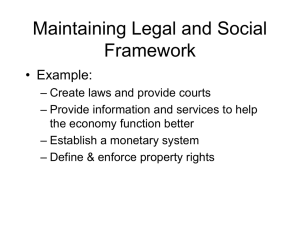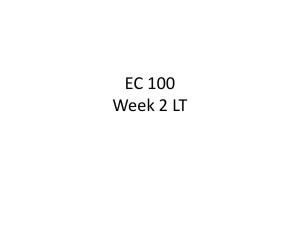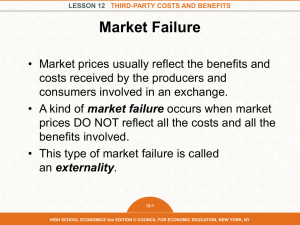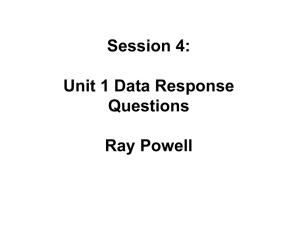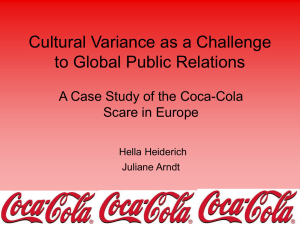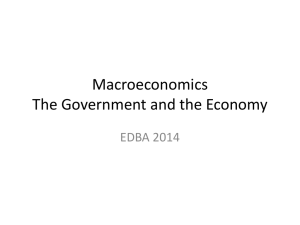Slides (PPT)
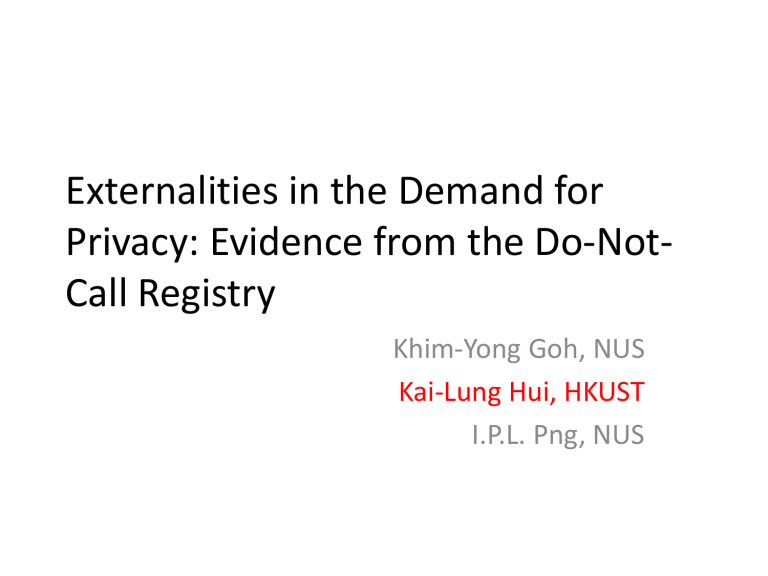
Externalities in the Demand for
Privacy: Evidence from the Do-Not-
Call Registry
Khim-Yong Goh, NUS
Kai-Lung Hui, HKUST
I.P.L. Png, NUS
Privacy and Regulation
• “Privacy is a fundamental right that people do
care about.”
Pamela Jones Harbour, Commissioner of U.S. FTC
• Existing research has been lagging behind:
– Surveys and laboratory experiments
– Little empirical research about real behavior
– Mostly study direct benefits/costs of privacy, not
externalities between consumers
WISSP, October 2010 2
Externalities
• How one person’s decision affect others
– Pollution, public good, etc.
• Two types of externalities among consumers related to privacy
– Preference externalities: How consumers’ product preferences affect others
– Strategic marketing avoidance: How consumers’ marketing avoidance efforts affect others
WISSP, October 2010 3
Research Objectives
• Using real registration data from the U.S. Do
Not Call Registry: -
– Identify the presence of preference externalities vis-à-vis strategic marketing avoidance in the demand for privacy
– Draw implications on optimal government intervention and vendor responses
WISSP, October 2010 4
Theory – Preference Externalities
• Reasons for preference externalities
– Fixed costs in retailing
limited products
– Incomplete information on consumer preferences
product configuration based on aggregate attributes, e.g., age and gender
– These apply equally well to direct marketing
• Within-segment: demand
when the size of the same segment increases
• Cross-segment: demand
when the size of other segments increases
WISSP, October 2010 5
Theory – Preference Externalities
• The larger the size of a demographic segment
the more likely a person will find the products that she wants via direct marketing
the less likely that she will sign up for DNC
• H1 (Preference externalities): Marketing avoidance in a particular demographic segment would decrease with the size of that segment
WISSP, October 2010 6
Theory – Strategic Marketing
Avoidance
• Vendors ignore harms caused by solicitations
• Consumers avoid marketing when the harms exceed the benefits from direct marketing
• Marketing avoidance facilities serve to “filter” the population for vendors
• What would vendors do when the population becomes “richer”?
• How would remaining consumers respond?
WISSP, October 2010 7
Theory – Strategic Marketing
Avoidance
• In general, larger consumer segments
stronger impact on vendors’ expected profits due to marketing avoidance
stronger strategic complementarity
• H2 (Strategic marketing avoidance): Marketing avoidance in a particular demographic segment would increase with the size of that segment
WISSP, October 2010 8
The DNC Registry
• Fixed line and mobile, not business numbers
• Telemarketers must check phone numbers against DNC no less frequently than 31 days
• Registrations were indefinite
• Desirable characteristics
– Real observations of consumer choices
– Free service, low sign up cost, and no competition
– Covers entire USA; lots of variations in consumer demographics across regions
WISSP, October 2010 9
Data Sources, Issues, etc.
Our equilibrium state
0 10 40 50 20
Week
30
• County- and MSA-level population data from
U.S. Census Bureau
WISSP, October 2010 10
Preference Externalities: Evidence
WISSP, October 2010 11
Preference Externalities: Evidence
WISSP, October 2010 12
Marketing Avoidance: Evidence
• There was concomitant increase in consumer purchase of directly marketed items and marketing avoidance
WISSP, October 2010 13
Empirical Model
• DNC registration rates:
-ve
preference externalities
+ve
strategic marketing avoidance
• With help of population data, specifically,
• Integrating the above equations,
WISSP, October 2010 14
SMA among highincome people
Results
PE among lesseducated people
SMA among
Hispanics and non-
Hispanics
SMA among non-
Spanish-only speakers
WISSP, October 2010 15
Robustness
Different equilibrium states
Perhaps the effects were due to direct communications?
Maybe consumer heterogeneity mattered?
WISSP, October 2010 16
County-Level Markets
• DNC registration rates:
• Estimation equation,
• Within-segment parameters could be identified, but not cross-segment parameters
WISSP, October 2010 17
County-Level Markets: Results
Fairly consistent with the MSAlevel results…
WISSP, October 2010 18
Summary of findings
• Strategic marketing avoidance: High income, age, Hispanic ethnicity, non-Spanish-only speaking consumers
• Preference externalities: Less educated consumers
– Waldfogel (2003, RJE) and George and Waldfogel
(2003, JPE): Preference externalities among black, white, and Hispanic ethnicity, but not education in radio and newspaper markets
– Our (telemarketing) results are opposite
WISSP, October 2010 19
Implications (1)
• Evidence of strategic marketing avoidance
low-value consumers opted out
More profitable “market” for the vendors
Opt out facilities could indeed be helpful to vendors!
WISSP, October 2010 20
Practical Suggestions
• Direct marketers should support “opt out” facilities because such facilities help refine marketing lists
• Once this is understood, there will be less need for government to offer such services
– Should not “over-respond” to such refinement of marketing lists
• (otherwise “profitable”) Consumers may strategically respond by opting out
• Possible exception on competition law so that direct marketers can agree to limit solicitations?
WISSP, October 2010 21
Implications (2)
• Preference externalities segmented by education
either:
– Telemarketers have not segmented markets by education fine enough, or
– Product customization is too low in that market
• Perhaps refine offering by education level?
– Financial/investment services, or educational services…
WISSP, October 2010 22
Concluding Remarks
• Evidence of externalities
strong justification for government regulation of privacy
– These are beyond “standard” reasons, such as consumer myopia or protecting vulnerable segments, e.g., children
WISSP, October 2010 23
Thank you!
WISSP, October 2010 24
